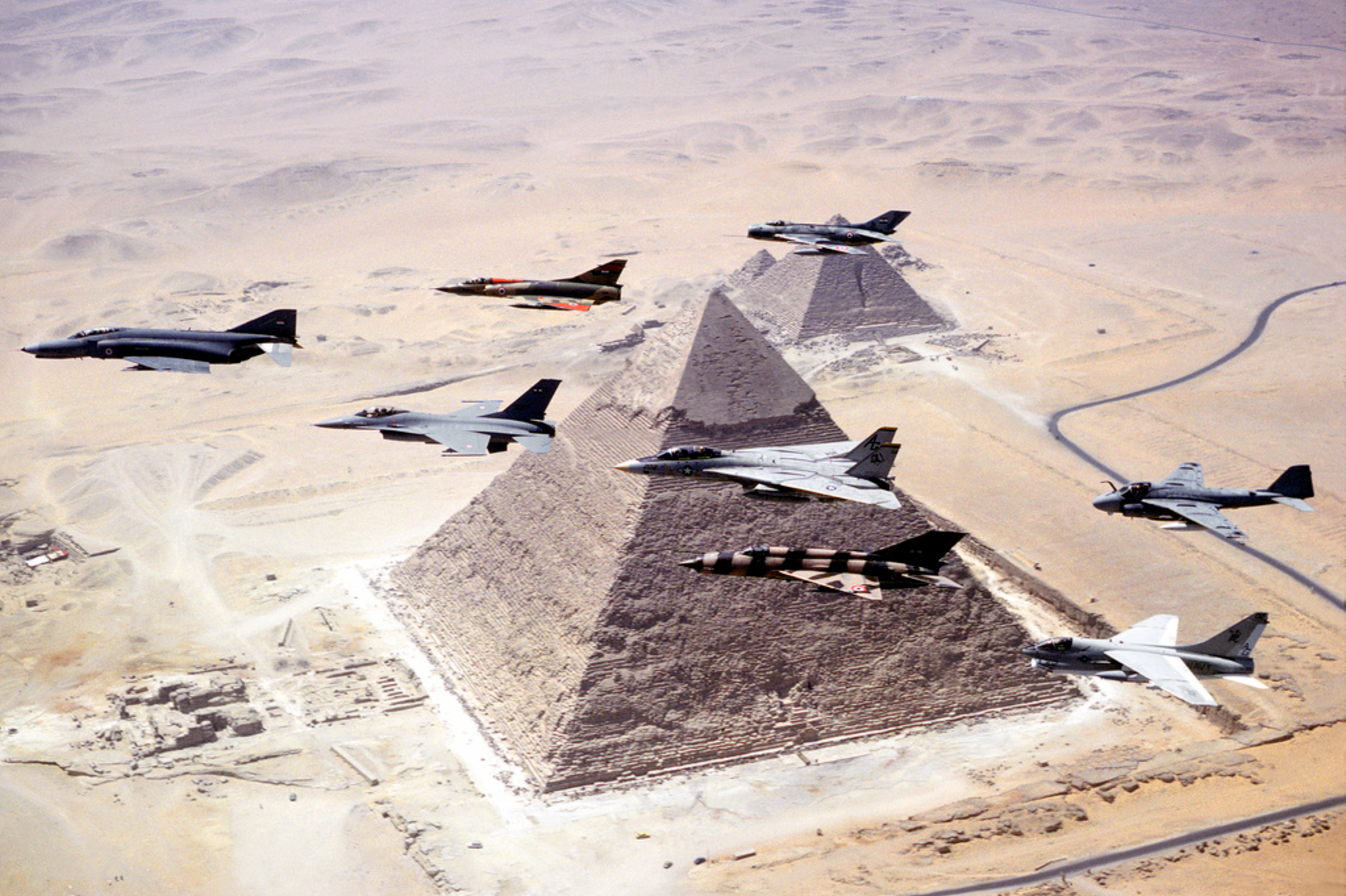
The Egyptian Air Force (EAF) is the largest and most efficient air force in Africa and one of the most modern in the Middle East. With more than 30,000 active-duty troops, 20,000 reservists, and more than 1,000 aircraft, they form the backbone of Egypt's military power and a central component of national defense strategy. Over the decades, the EAF has evolved from a small colonial-era formation into a technologically advanced force capable of conducting modern, multi-role operations over vast areas.
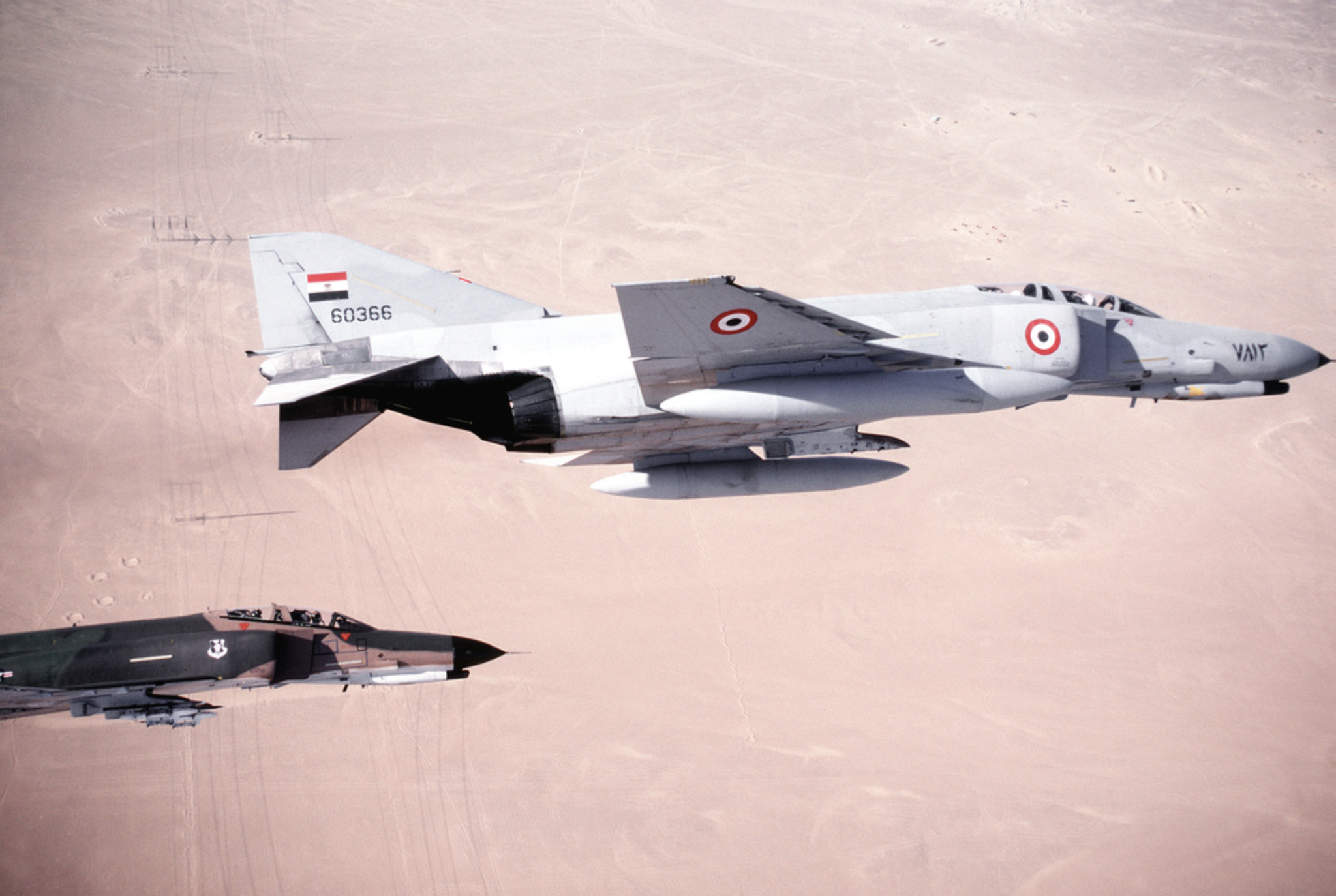
Photo: Combined digital photo files of the Military Service, Arab Republic of Egypt
History
The origins of the EAF date back to 1932, when it was established as the Egyptian Air Force of the Army - the first air service in both the Arab world and Africa. Initially equipped with a small number of British de Havilland aircrafts, their first pilots were trained in Britain. These forces remained limited during World War II, but after the 1952 revolution that brought Gamal Abdel Nasser to power, Egypt began to invest heavily in the development of an independent and modern army. Close cooperation with the Soviet Union in the 1950s and 1960s provided Egypt with jet fighters such as the MiG-15, MiG-17, MiG-19, and later MiG-21, as well as Il-28 bombers and An-12 transport aircraft. The Egyptian Air Force (EAF) grew rapidly and was involved in all of Egypt's major conflicts with Israel—the Suez Crisis of 1956, the Six-Day War of 1967, and the Yom Kippur War of 1973. During the latter, Egyptian pilots carried out coordinated airstrikes that neutralized Israeli radar positions and supported the army's successful crossing of the Suez Canal, demonstrating courage and strategic maturity despite heavy casualties.
After the 1979 peace treaty with Israel, Egypt switched from Soviet suppliers to Western suppliers, aligning its defense partnerships with the United States and Western Europe. The introduction of the F-4E Phantom II, and later the F-16 Fighting Falcon, fundamentally changed the structure of the Egyptian Air Force, making it one of the most modern and modern in the region, equipped with Western equipment. Supported by U.S. training, maintenance, and logistics programs, EAF became the fourth-largest F-16 operator in the world, with about 200-220 aircraft in service. This transformation ushered in a new era, focused on the modernization, interoperability and professionalization of flight operations.
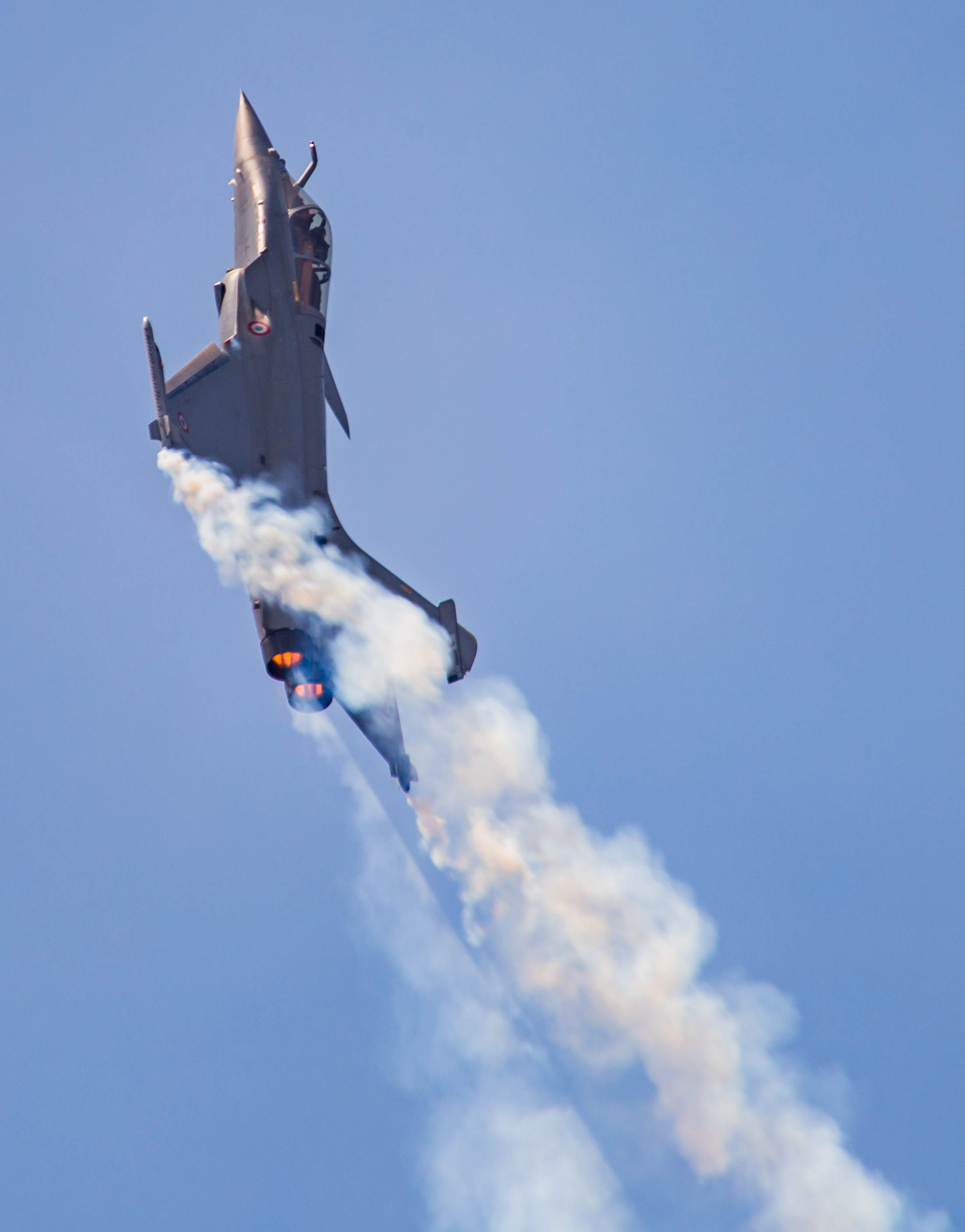
Photo: Clemens Vasters
Currently
Currently, the Egyptian Air Force operates about 1065 aircraft, including 350-400 fighter-ready fighters. The fleet reflects a well-thought-out diversification strategy, ensuring Egypt's independence from a single supplier. The basic EAF fighters are the American F-16 Fighting Falcon, the French Dassault Rafale and the Russian MiG-29M/M2. Egypt currently operates 54 Rafale aircraft - 24 from the original contract from 2015 and another 30 from the order from 2021. These aircraft provide advanced multi-role capabilities, long-range precision strike options, and modern avionics, significantly enhancing Egypt's deterrence potential. The 46 MiG-29M/M2 fighters acquired between 2017 and 2020 complement the Western fleet, while a small number of Mirage 2000s and MiG-21s continue to serve in training and secondary roles.
In addition to its fighter fleet, the EAF maintains a powerful rotorcraft component, consisting of more than 300 helicopters. This includes 46 AH-64E Apache Guardian helicopters used in counterinsurgency operations in the Sinai Peninsula, 40 Mi-17 Hip transport helicopters, about 50 locally assembled SA-342 Gazelles, and 20 CH-47 Chinook for heavy transport missions. These helicopters are critical for air mobility, search and rescue, and humanitarian support. The Air Force's transport capabilities are equally significant, built around a fleet of more than 25 C-130 Hercules aircraft, several Il-76 strategic transport aircraft, and a growing number of Airbus C-295s. These aircraft provide strategic air transport for troops, supplies, and peacekeeping operations in Africa and the Middle East. Egypt has also invested in special mission aircraft, such as the King Air 350ISR and Falcon 20 reconnaissance platforms, as well as an increasing number of unmanned systems. The purchase of China's Wing Loong II drones and the development of domestic unmanned aerial vehicles (UAVs) underscore Egypt's intention to expand surveillance and precision strike capabilities.
Egypt's air defense network is one of the most comprehensive in the Middle East, combining imported and domestic systems into a multi-layered structure. Long-range defense is provided by Russian S-300VM (Antey-2500) systems, supported by Buk-M2E and Tor-M1 batteries for intercepting medium and short-range targets. Locally manufactured AMOUN and Skyguard systems extend the range of point defense, protecting critical infrastructure such as the Suez Canal, Cairo, and major industrial zones. This network, integrated with nationwide radar coverage and modern command and control centers, ensures Egypt's sovereignty in its airspace.
Aviation industry
Industrial and technological development has become a strategic priority for the EAF and the Egyptian government. The Arab Industrialization Organization (AOI), founded in 1975, is the foundation of Egypt's defense industry. Its plants, such as the Helwan Aircraft Factory and the Kader Factory for Advanced Industry, are engaged in aircraft assembly and maintenance, the production of unmanned aerial vehicles (UAVs), and the production of spare parts and avionics. The main success of these activities is the K-8E Karakoram training aircraft, produced in cooperation with China and Pakistan, of which more than 120 copies have been assembled locally. This program provides advanced training to Egyptian pilots and maintains a growing workforce in the country's aerospace sector. Egypt's defense sector is also investing in drone technology, maintenance capabilities, and electronic warfare systems to reduce dependence on foreign suppliers and ensure long-term operational independence.
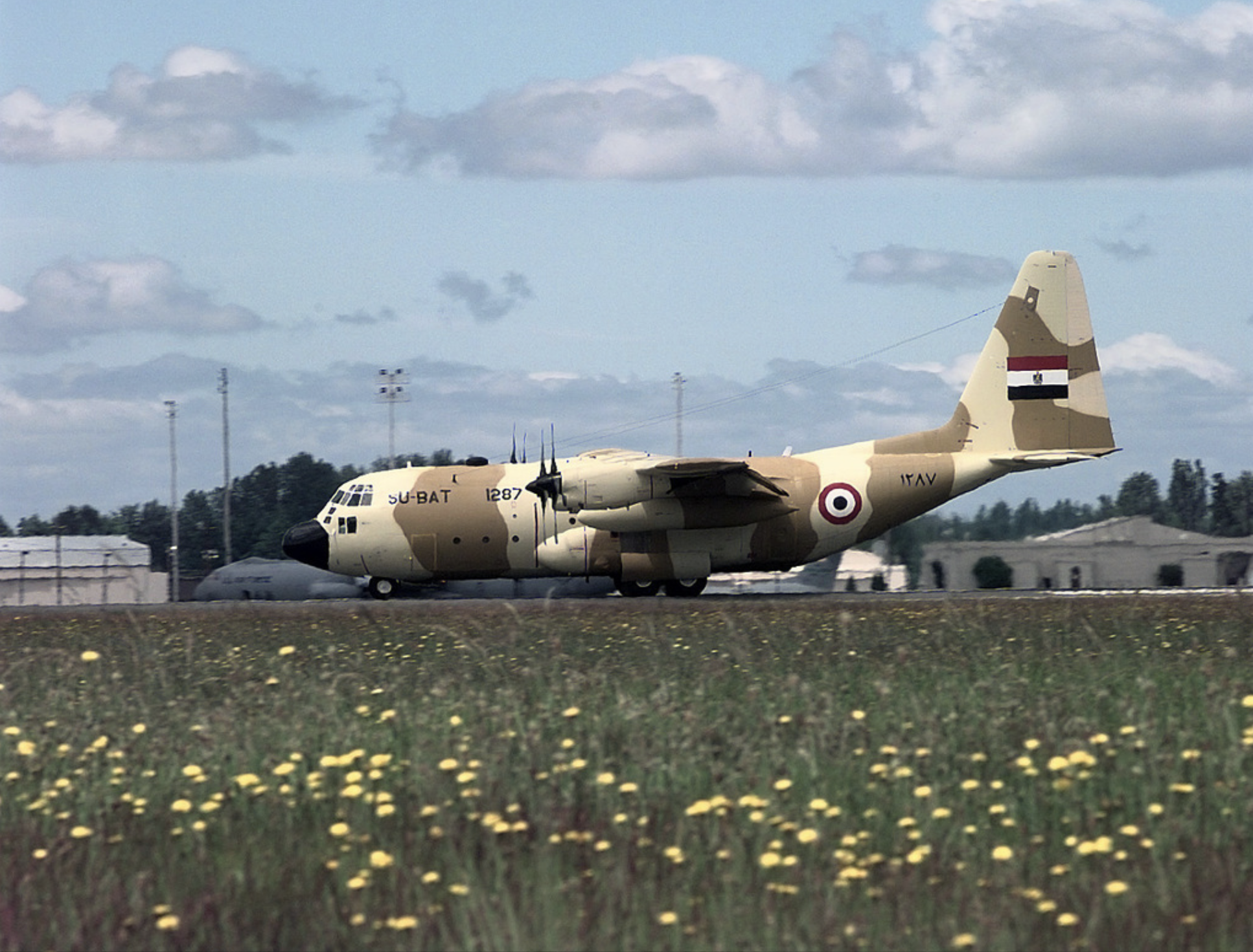
Photo: Combined digital photo files of the Military Service, Arab Republic of Egypt
Operations
Operationally, the Egyptian Air Force maintains about 20 major air bases across the country, including in West Cairo, Beni Suef, Marsa Matrouh, Kom Awshim, and Gebel El Basur. These bases enable rapid response and support of operations throughout the territory of Egypt and beyond. The EAF also plays an active role in counterterrorism missions, particularly in the Sinai Peninsula, where it provides air cover, intelligence, and precision strikes on militant targets. In addition to combat operations, EAF participates in humanitarian and peacekeeping missions, using its transport and helicopter fleets to provide assistance during regional crises and natural disasters.
Training and international cooperation remain the foundation of the Air Force's strength. The Egyptian Aviation Academy in Bilbeis trains hundreds of pilots and engineers every year, supported by advanced flight training on K-8E and Alpha Jet aircraft. Egypt regularly participates in international exercises such as "Bright Star" with the United States, "Medusa" with Greece and Cyprus, and "Horus" with France, increasing interoperability and strengthening strategic ties with partner countries.
Looking ahead, the Egyptian Air Force continues to focus on modernization and technological integration. Their key priorities include modernizing the F-16 fleet by introducing new avionics, expanding the Rafale program, integrating advanced unmanned aerial vehicles (UAVs), and improving data transmission and satellite communication systems to achieve network-based combat capabilities. Egypt is also investing in domestic research and manufacturing to develop future aircraft components and precision weapons. This modernization strategy ensures a balanced structure of the armed forces - preserving the combination of Western and Eastern technologies, while strengthening Egypt's strategic autonomy.
As of 2025, the Egyptian Air Force has about 1065 aircraft, including about 400 jets and 300 helicopters. They remain not only the largest air force in Africa and the Arab world, but also one of the most technologically diverse in the world. Their transformation from a small fleet of British trainer aircraft from the 1930s to a modern, multi-role force capable of regional power projection is a testament to Egypt's resilience, innovation and relentless pursuit of sovereignty and leadership in the Middle East.
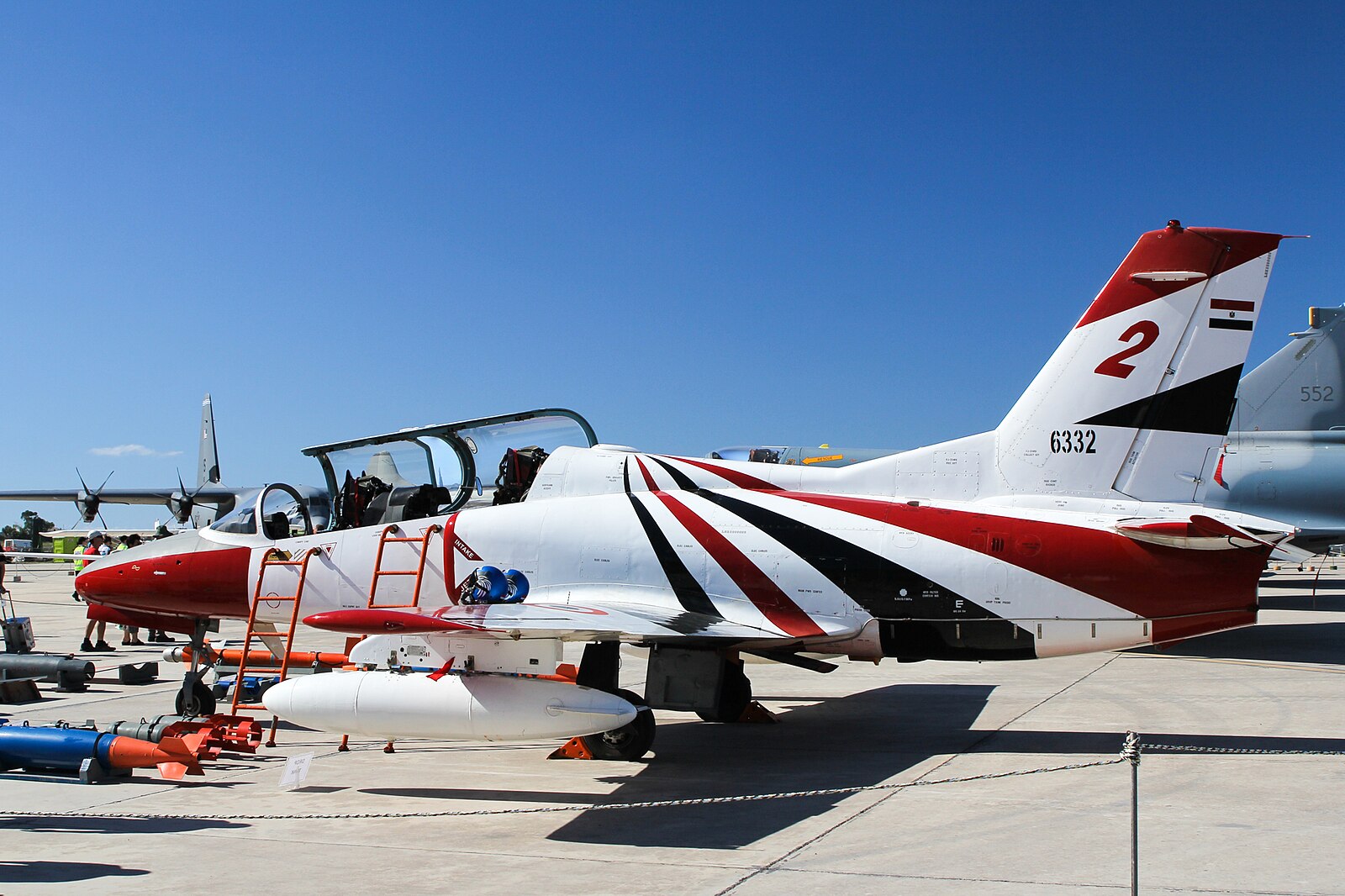
Photo: Oren Rozen
Photo: Combined digital photo files of the Military Service, Arab Republic of Egypt
This article was prepared as part of the public task commissioned under the Government Programme for the Development of Civic Organizations 2018–2030: “Safe Poland of Tomorrow – strengthening the mission-driven activities of the Alioth Foundation.”

